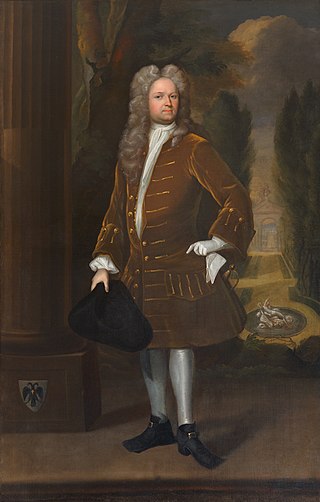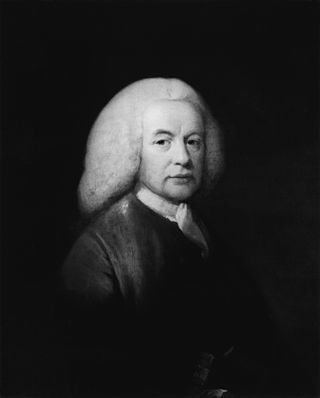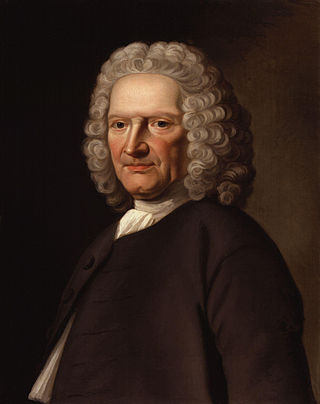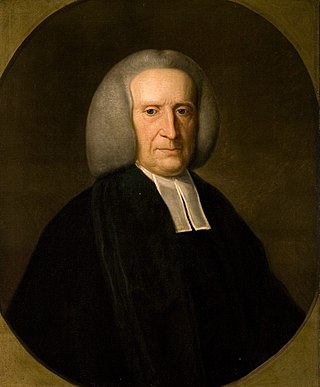Related Research Articles

William Stukeley was an English antiquarian, physician and Anglican clergyman. A significant influence on the later development of archaeology, he pioneered the scholarly investigation of the prehistoric monuments of Stonehenge and Avebury in Wiltshire. He published over twenty books on archaeology and other subjects during his lifetime. Born in Holbeach, Lincolnshire, as the son of a lawyer, Stukeley worked in his father's law business before attending Saint Benet's College, Cambridge. In 1709, he began studying medicine at St Thomas' Hospital, Southwark, before working as a general practitioner in Boston, Lincolnshire.

Southwick is a small village and civil parish in Northamptonshire, England. It is approximately 3 miles (4.8 km) north of the town of Oundle and is set in a valley of the River Nene. The village lies in the North Northamptonshire. Before local government changes in 2021 it fell within the non-metropolitan district of East Northamptonshire, which lay within the East Midlands region. At the time of the 2001 census, the parish's population was 180 people, increasing marginally to 181 at the 2011 Census.

Martin Folkes was an English antiquary, numismatist, mathematician and astronomer who served as the president of the Royal Society from 1741 to 1752.
Sir Joseph Ayloffe, 6th Baronet FRS, FSA was an English antiquary.
Francis Peck (1692–1743) was an English priest of the Church of England and antiquary, best known for his Desiderata Curiosa (1732–1735).

William Irby, 1st Baron Boston was a British peer and Member of Parliament.

James Parsons FRS was an English physician, antiquary and author.

Sir John Willes was an English lawyer and politician who sat in the House of Commons from 1724 to 1737. He was the longest-serving Chief Justice of the Court of Common Pleas since the 15th century, serving 24 years.
The Spalding Gentlemen's Society is a learned society based in Spalding, Lincolnshire, England, concerned with cultural, scientific and antiquarian subjects. It is Britain's oldest such provincial body, founded in 1710 by Maurice Johnson (1688–1755) of Ayscoughfee Hall. Membership is open to anyone aged 18 or over: the term "gentlemen" in the title is historical – there is no discrimination between men and women. Its Grade II listed museum in Broad Street, Spalding, was designed by Joseph Boothroyd Corby and opened in 1911; additions to the building ensued in 1925 and 1960. The carved outside panels were by Jules Tuerlinckx of Malines, a Belgian refugee in the First World War.

Samuel Pegge "the Elder" was an English antiquary and clergyman.
Alexander Gordon was a Scottish antiquary and singer. His survey of Roman sites, the Itinerarium Septentrionale, was considered an essential reference by all Roman antiquaries of his time.
Robert Stephens (1665–1732), who was appointed historiographer royal in 1727, was a public servant and historian. He was the first to publish much of Francis Bacon's private correspondence.
Joseph Sparke or Sparkes (1683–1740) was an English antiquary, editor of some significant chronicles.
William Bray (1736–1832) was an English antiquary, best known as co-author of a county history of Surrey.

John Ward (1679?–1758) was an English teacher, supporter of learned societies, and biographer, remembered for his work on the Gresham College professors, of which he was one.
Samuel Gale was an English antiquary, and a founder of the Society of Antiquaries of London.

William Becket (1684–1738) was an English surgeon and antiquary.

William Richardson (1698–1775) was an English academic and antiquary, Master of Emmanuel College, Cambridge from 1736.

George Portwood was a carpenter and architect who worked in Stamford. He was Chamberlain of Stamford in 1736 and Mayor of Stamford.
References
- ↑ Philosophical Transactions. xxxiv. 66, xxxix. 196.
- ↑ ibid. xxxiv. 253.
- ↑ ibid. xxxv. 351.
- ↑ ibid. xl. 686.
- ↑ Stukeley, Memoirs, i. 432.
- ↑ Gentleman's Magazine. 1735, 451.
- ↑
 This article incorporates text from a publication now in the public domain : Clerke, Agnes Mary (1893). "Lynn, George". Dictionary of National Biography . Vol. 34. p. 343.
This article incorporates text from a publication now in the public domain : Clerke, Agnes Mary (1893). "Lynn, George". Dictionary of National Biography . Vol. 34. p. 343.
DNB references
These references are found in the DNB article referred to above.
- ↑ Memoirs of William Stukeley, MD (Surtees Society), 1882, i. 427, iii. 38, 49
- ↑ Bridges's History of Northamptonshire (Whalley), ii. 469, 472
- ↑ Nichols's Literary Anecdotes vi. 72, 116
- ↑ Reliquiae Galleanæ, pages 57, 64
- ↑ Wolf's Geschichte der Astronomie, page 699
- ↑ Whellan's Hist. and Gazetteer of Northamptonshire, 1849, page 743
- ↑ Watt's Bibl. British
- ↑ The Genealogist, i. 353–4.